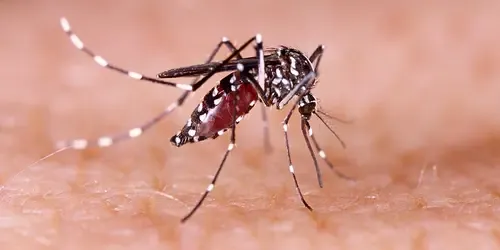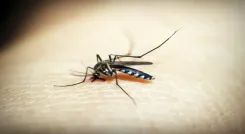Is Dengue Fever Increasing in US States, Signaling a New Reality?

Synopsis
Key Takeaways
- Dengue fever cases are rising significantly in the US.
- Health officials warn this may become a permanent health issue.
- Climate change is a major factor in the mosquito population growth.
- Public health measures are crucial to combat the spread.
- Local transmission is now prevalent in several states.
Sacramento (United States), July 3 (NationPress) Health officials in California, Florida, and Texas are facing a concerning trend as dengue fever cases nearly double nationwide, indicating that this mosquito-borne illness might be establishing a lasting presence in communities, according to health reports.
The US Centers for Disease Control and Prevention (CDC) revealed that approximately 3,700 new dengue infections were documented last year in the contiguous United States, a significant rise from about 2,050 in 2023, as reported by KFF Health News on Wednesday.
This increase included 105 locally acquired cases in California, Florida, or Texas, rather than through international travel.
California experienced the most significant rise. In 2024, the state reported 725 new dengue cases, with 18 being locally acquired, according to data from the Xinhua news agency. This marks a nearly threefold increase from around 250 new cases, including two local infections, in 2023.
The disease is transmitted via bites from infected Aedes mosquitoes, whose range has expanded aggressively.
Aedes aegypti and Aedes albopictus mosquitoes that spread dengue were not present in the Golden State 25 years ago. They are now located in 25 counties and over 400 cities and unincorporated areas, primarily in Southern California and the Central Valley.
Michael Ben-Aderet, associate medical director of hospital epidemiology at Cedars-Sinai in Los Angeles, stated that he believes dengue fever has become a “new normal” in the United States, stressing that the mosquito population will continue to thrive.
Climate change has contributed to the growth of these mosquito populations, as they thrive in warm urban settings and often bite during the daytime, according to Ben-Aderet.
The CDC issued a health alert in March, cautioning about the ongoing risk of dengue infection.









